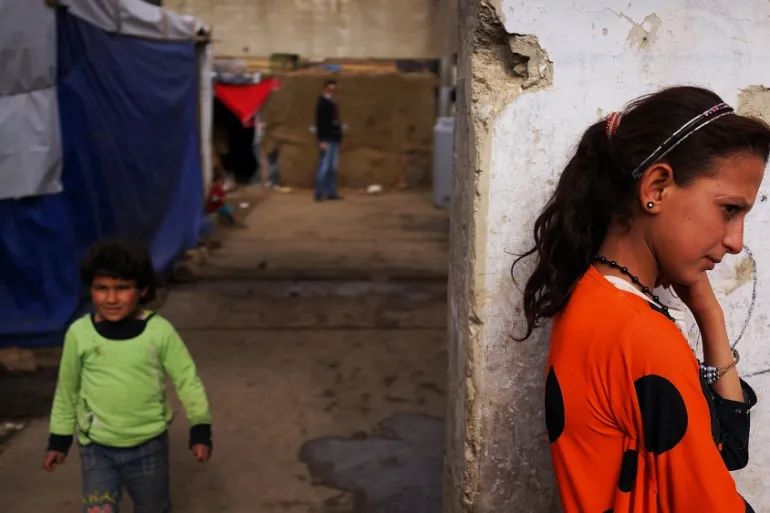BEIRUT, Lebanon -Since the outbreak of Syria’s war in 2011, professor Nasser Yassin has been working to understand the ensuing refugee crisis.
As Lebanon’s refugee influx intensified, Yassin began exploring how civil society and informal networks could influence government policy and humanitarian programmes. With more than one million officially registered Syrian refugees, Lebanon hosts the largest refugee population per capita in the world – but Yassin soon observed that much of the rhetoric on the issue was based on emotion, rather than facts.
“There was a need to inform decision-makers and the wider public about the refugee crisis with facts to show the reality in a balanced, scientific way,” said Yassin, who leads the American University of Beirut’s Issam Fares Institute for Public Policy and International Affairs.
Six months ago, he kicked off a “Fact of the Day” Twitter campaign to counter inflammatory rhetoric about Syrian refugees in Lebanon with a fact-based narrative. To this day, he continues to provide daily bites of information under the hashtag #AUB4Refugees.
Among the facts Yassin has dug up are demographic data from the United Nations refugee agency, showing that more than 80 percent of Syrian refugees in Lebanon are women and children. That would mean the refugee population includes only around 200,000 men, indicating that Syrian refugees are a lesser burden on the labour market – associated with an inflow of working-age male job seekers – than is commonly believed.
Another major misconception among Lebanese citizens is that the refugee influx has weakened the country’s economy, Yassin said, when in reality it is the Syrian war itself that has negatively impacted trade and tourism.
“Tourism, banking and real estate, some of Lebanon’s main economic drivers, have been badly hit by the Syria crisis, not by the refugee population,” noted Wissam Harake, an economist at the World Bank Group’s Beirut office, citing a recent report on the effects of Syria’s war on the Lebanese economy between 2011 and 2013.
In contrast to the common perception that refugees are purely a financial burden, consumption and investment within the refugee community have helped to alleviate some of the costs associated with the influx, Yassin added. Syrian refugees pay more than $1m in daily rent across Lebanon, he said, citing his research. They also spend more than $22m every month on food, according to the World Food Programme.
“Before the Syrian war, Syrians used to work, save up and send money home. Now they stay, spend and consume in Lebanon,” Yassin told Al Jazeera.
He believes that claims that refugees have taken jobs from Lebanese workers and raised unemployment levels across the country are “exaggerated”, although he acknowledges the inevitable competition over unskilled and semi-skilled jobs, given the influx of a large new labour force.
Around three-quarters of Syrian refugees work in the same sectors they had dominated in Lebanon before the Syrian crisis began: construction, agriculture, environment and cleaning services, according to Yassin.
George Ghali, the programmes manager with the Lebanese human rights watchdog ALEF, pointed out that Lebanese businessmen have also exploited the precarious situation of Syrian refugees to obtain cheap labour, pushing refugees to work under the table, without contracts or benefits.
“Business owners employing Syrians are able to both maintain some cost control and make good profits with less costly labour as refugees accept lower incomes for longer working hours,” Ghali told Al Jazeera.
Syrians bolster Lebanon’s economy by working in local businesses, providing income for rental property owners and feeding the real estate market in the country’s peripheral areas, he added.
“The refugee crisis has generated job creation, with openings in international NGOs recruiting Lebanese staff in the regions outside the capital,” he said, citing the Bekaa Valley, which hosts the highest number of Syrian refugees in Lebanon.
Although many say that the refugee influx has placed an enormous burden on Lebanon’s basic urban infrastructure and public services, Yassin’s Twitter campaign has highlighted the fact that at least 87 percent of Syrian refugees in Lebanon are concentrated in the peripheral, historically poor and deprived areas.
Yassin has also aimed to debunk inflated figures on new refugee births in 2017, claimed by some to be as high as 300,000. The actual figure is 117,000 in the last five years, his research shows; the 300,000 figure accounts for all children born to Syrian refugee parents in exile globally since the conflict began.
Through his online campaign, Yassin said he hopes to change the narrative from “refugees as a burden” to”refugees as assets”, revealing the positive contribution that Syrian refugees are making in Lebanon.
“With facts, we state the reality and take the debate where it should go,” he said.
Originally published in Al Jazeera English

